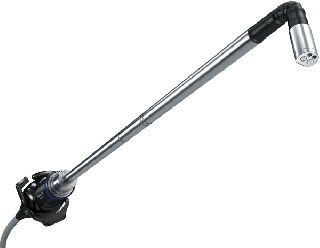Laparoscopic surgery has become increasingly popular over the past few decades due to its several advantages over traditional open surgery. Laparoscopic surgery involves making small incisions in the patient's body and inserting a camera and surgical instruments through the incisions. This allows the surgeon to perform surgery with greater precision and less pain and scarring. The use of 3D laparoscopic imaging systems has further improved the precision and accuracy of laparoscopic surgery. This essay will discuss the benefits of 3D laparoscopic imaging systems, the technology behind these systems, and the impact of 3D laparoscopic imaging systems on laparoscopic surgery.
Benefits of 3D Laparoscopic Imaging Systems:
3D laparoscopic imaging systems provide several benefits over traditional 2D laparoscopic imaging systems. Firstly, they provide a more immersive and realistic view of the surgical field. The use of 3D imaging allows the surgeon to visualize the surgical field in three dimensions, providing a more accurate and detailed view of the patient's anatomy.
Secondly, 3D laparoscopic imaging systems improve the precision and accuracy of laparoscopic surgery. The use of 3D imaging allows the surgeon to better visualize the surgical field, which improves their ability to identify and avoid important structures such as blood vessels and nerves. This reduces the risk of complications during surgery and improves patient outcomes.
Thirdly, 3D laparoscopic imaging systems reduce the learning curve for laparoscopic surgery. The use of 3D imaging makes it easier for surgeons to learn and master laparoscopic surgery. This can increase the availability of laparoscopic surgery to more patients, as more surgeons become proficient in the technique.
Finally, 3D laparoscopic imaging systems reduce the length of surgery and the recovery time. The improved precision and accuracy of 3D imaging allows the surgeon to perform surgery more efficiently, which reduces the length of surgery and the recovery time for the patient.
Technology Behind 3D Laparoscopic Imaging Systems:
3D laparoscopic imaging systems use advanced imaging technology to provide a more accurate and detailed view of the surgical field. These systems use stereoscopic cameras to capture two images of the surgical field from slightly different angles. These images are then combined to create a 3D image of the surgical field.
The images captured by 3D laparoscopic imaging systems are of a higher quality than those captured by traditional 2D imaging systems. They provide a more accurate and detailed view of the patient's anatomy, which allows the surgeon to perform surgery with greater precision and accuracy. Additionally, the use of 3D imaging reduces the need for the surgeon to move the camera around during surgery, which can reduce the risk of complications and improve patient outcomes.
Impact of 3D Laparoscopic Imaging Systems on Laparoscopic Surgery:
The use of 3D laparoscopic imaging systems has had a significant impact on laparoscopic surgery. It has improved the precision and accuracy of laparoscopic surgery, reduced the risk of complications, and improved patient outcomes. Additionally, the use of 3D imaging has reduced the learning curve for laparoscopic surgery, making it easier for more surgeons to adopt the technique.
The adoption of 3D laparoscopic imaging systems has also increased the availability of laparoscopic surgery to more patients. The improved precision and accuracy of 3D imaging has made laparoscopic surgery more attractive to surgeons, which has led to increased adoption of the technique. This has led to more patients having access to laparoscopic surgery, which has improved patient outcomes and reduced healthcare costs.
Challenges in the Adoption of 3D Laparoscopic Imaging Systems:
Despite the benefits of 3D laparoscopic imaging systems, there are challenges in their adoption One of the challenges in the adoption of 3D laparoscopic imaging systems is the cost. 3D imaging systems are more expensive than traditional 2D imaging systems, which can limit their availability to hospitals and patients. However, as the technology continues to evolve and become more widely adopted, the cost of 3D imaging systems is expected to decrease, making them more accessible to hospitals and patients.
Another challenge in the adoption of 3D laparoscopic imaging systems is the need for specialized training. Surgeons require specialized training to use 3D imaging systems effectively. This can be a barrier to the widespread adoption of 3D imaging systems, as not all surgeons may be willing or able to undergo the necessary training. Additionally, the availability of trained personnel may limit the accessibility of 3D laparoscopic imaging systems to patients in certain regions.
Finally, the use of 3D laparoscopic imaging systems requires specialized equipment and facilities. Hospitals may need to invest in new equipment and facilities to support the use of 3D imaging systems, which can be costly. Additionally, the use of 3D imaging systems may require changes to the surgical workflow and the use of specialized instruments, which can add to the cost and complexity of the procedure.
Conclusion:
In conclusion, 3D laparoscopic imaging systems are becoming increasingly popular due to their several benefits over traditional 2D imaging systems. They provide a more immersive and realistic view of the surgical field, improve the precision and accuracy of laparoscopic surgery, reduce the learning curve for laparoscopic surgery, and reduce the length of surgery and the recovery time. However, the adoption of 3D laparoscopic imaging systems faces several challenges, including cost, the need for specialized training, and the need for specialized equipment and facilities. With further research and advancements in technology, it is likely that the adoption of 3D laparoscopic imaging systems will continue to increase, leading to better outcomes for patients undergoing laparoscopic surgery.


